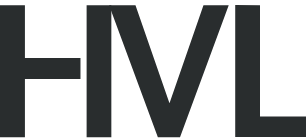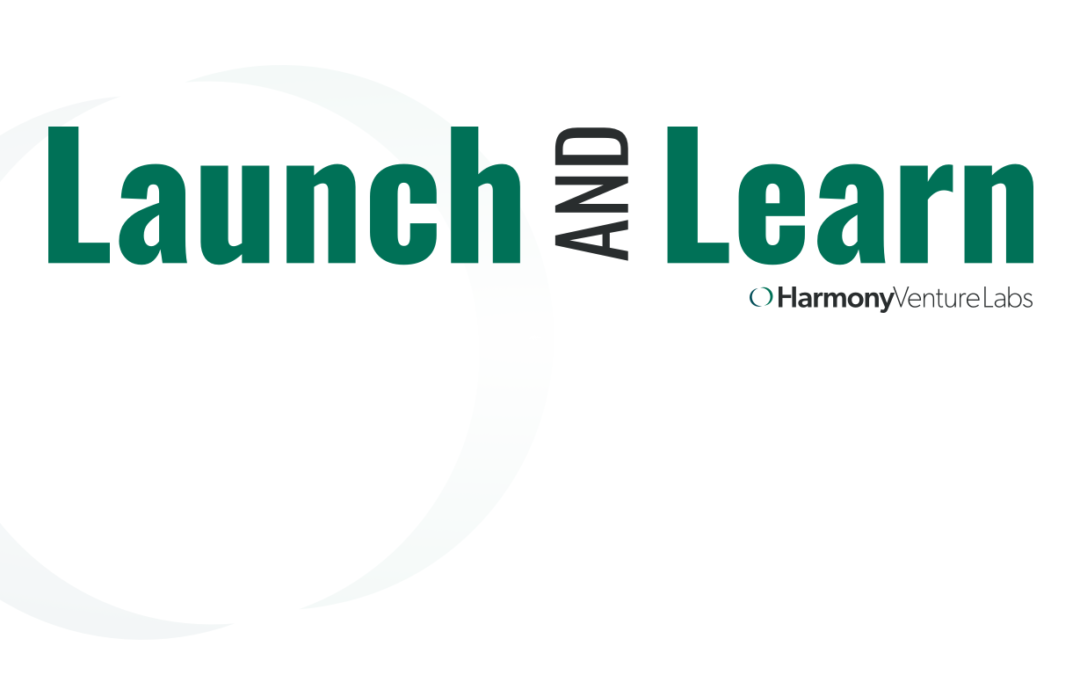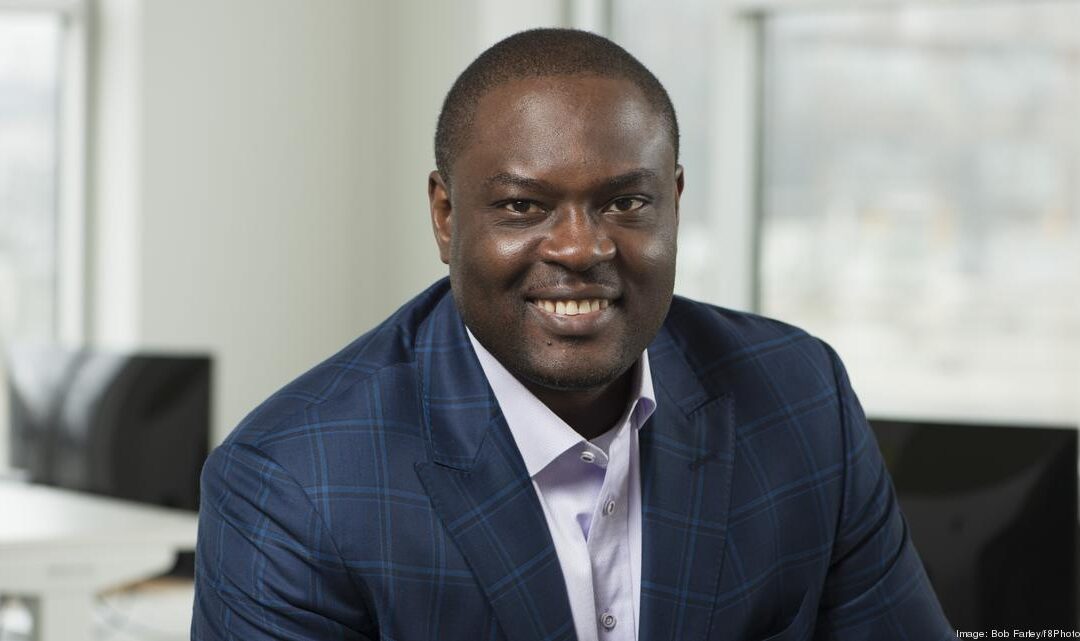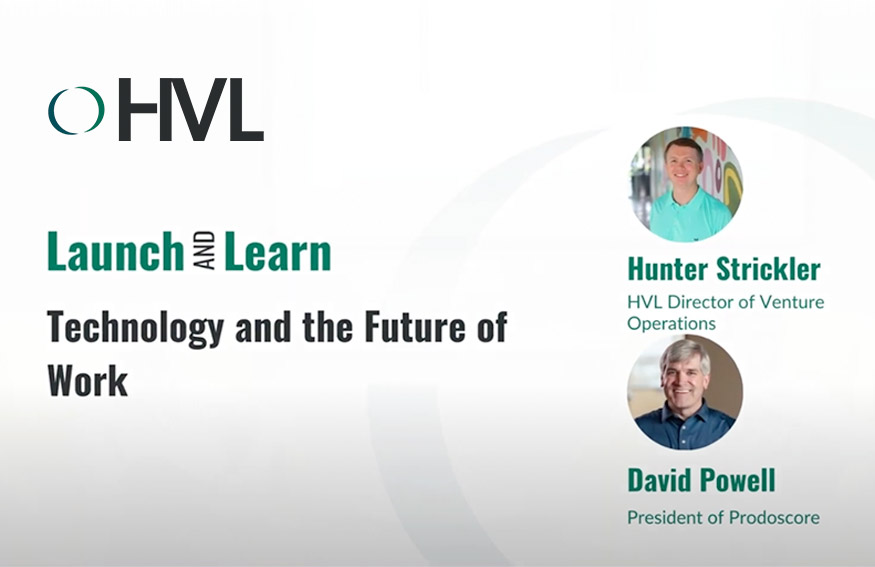Katrina Langland: I want to welcome everyone to our third Launch & Learn! Our last Launch & Learn on product marketing went really well—if you did not catch it, it’s located on our YouTube channel.
Today we’re switching gears and talking about product design. We have a great panel of HVL team members here to lead that conversation. My name is Katrina Langland, a designer-in-residence at Harmony Venture Labs, and I’m going to go ahead and introduce our panelists.
Kayla McNeil is the Director of Design at HVL, where she oversees the vision and output of all things design. Prior to working at HVL, Kayla served as a product design manager for Therapy Brands, a leading provider of fully integrated Practice Management and EHR solutions for mental and behavioral health providers. Kayla resides in Birmingham, Alabama with her husband and their dog.
Next up is Shegun Otulana. Shegun is the founder and CEO of Harmony Venture Labs, an idea and growth studio that owns and operates a family of technology companies. He also serves as the CEO of Copysmith AI, a startup that uses artificial intelligence for content generation. In 2013, Shegun started Theranest and its’ parent company, Therapy Brands, the leading provider of software technology solutions for mental, behavioral, substance use disorder, and physical rehab providers. Prior to that, he founded Zertis Technologies, a computer software consultancy company. Shegun resides in Birmingham with his wife, Mary, and their four children.
To frame our conversation, let’s start from the beginning. Kayla, what is Product Design and how can it add value to early-stage startups?
Kayla McNeil: Product design is at the intersection of all the design disciplines that go into creating digital products. Oftentimes when talking about design as it relates to those digital products, a lot of people think design only refers to how an experience looks. However, product design is a holistic approach to building digital products. Product designers employ user research, content strategy, visual design, information architecture, experience-interaction design, and business strategy to make their design decisions.
For early-stage startups, product design can and should be a primary differentiator for your company. Design impacts all touchpoints of your business. Whether that’s product, branding, culture, hiring, business strategies—users have a really high expectation for performance and a frictionless experience. Good design sets your users up for that success.
Katrina Langland: That’s a great definition, Kayla. Moving on, what analytic tools and KPIs do you use to evaluate product experience?
Shegun Otulana: You can use a number of tools to monitor a product’s performance and there are different areas that you want to look at. There is the acquisition at the top of the funnel and then the customers internally, down to existing customers who are leaving your software.
Many of you are familiar with Google Analytics, which is one tool. There is also Hotjar, which really lets you see the interruptions inside your application. And then you also have things like Mixpanel, which is similar to Google analytics, but that really lets you drill down and do a whole bunch of data capture. And then there’s also Pendo and HubSpot.
All those are really good options for measuring engagement and customer retention. The thing you want to keep in mind is that just having the data alone is not where it ends. It’s not actionable in and of itself. It’s the analysis of the data that really matters. You want actionable insights and good analysis to come out of all the data you’re using. Sometimes it requires intuition and good product knowledge. You also want to use those tools to capture certain KPIs like NPS scores, which can be a good indicator of performance over time and customer retention.
But the thing is, no matter what tool or platform you use, it’s important to track the user experience changes over time and track design metrics at regular intervals — so that you can create a longer view of the shifts in your product over time. Then record and communicate what has changed in the user experience between each interval, so that you understand how those changes are impacting user satisfaction over time.
One tool that you can use to gather data in one place and then push it out everywhere will be something like Segment. You can actually aggregate all the data into segments, create a data warehouse, push it into the different tools and be able to look at that data to see your customers interacting with your software.
Katrina Langland: That’s good. Are there any big trends that you’ve seen in product design recently?
Kayla McNeil: Yeah, so I think, especially with the shift to heavy remote work, pretty much anything that is going to facilitate any remote or virtual work, whether that’s through AI, AR, VR, shared ecosystems for collaboration—that’s a huge feature set that we’re going to start seeing throughout product platforms.
And it doesn’t really seem like that’s going anywhere. We’re going to see users increasingly wanting products that are going to be easy to use, that is untethered, and then have smart features so they can do their jobs easier or live their lives through digital products with smart features like AI and voice control.
Katrina Langland: Where do you go to get design inspiration?
Kayla McNeil: Typically, if I’m looking for strictly UI inspiration, I think Dribbble is a good resource. However, since Dribbble usually just has static screenshots, it’s not necessarily a place where I would find UX inspiration. A lot of the tools that designers use have community-driven resources like Figma or Sketch and Miro, where you already have templates for common UX patterns that are provided through that community. This idea already provides a resource for finding inspiration. If I’m looking for something more specific about a feature or a problem that I’m trying to solve, I look at competitors or similarly-positioned products and see how they achieve those similar workflows. I think it’s always a good idea to take advantage of products with free trials. I mean, there’s nothing wrong with looking around and seeing how they’re achieving something or looking through open knowledge bases. And personally, I subscribe to a few UX and product design newsletters. Daily or weekly, I get new information for inspiration or articles that can help me stay in the know about product design.
Katrina Langland: So when is the right time to hire a designer for founders or early startups?
Shegun Otulana: Right from the beginning. And you have to think about hiring a little differently here. As soon as you have enough work for them—which really starts from the beginning of your journey—and the capital to adequately pay them, you should probably get a designer.
If you can’t get somebody on board full-time, you should look at tools like Design Pickle and other solutions out there that can help with illustrations and things like that. Design has really become a big differentiator for products these days, especially online products, the quality standard for design, in general, is way up there and that’s spread to everything that people are interacting with. I would say, think creatively about where to find great designers, and when you have work that requires a great design, you should try to reach out and get one.
Now, once you have the capital to adequately pay somebody as a core member of the team, you should do it. In my experience, an early design hire can be incredibly influential and guide foundational decisions for your business and the product. You should think about some key questions: is design a blocker for this business? Do users like the current design? How soon will we outgrow the current design? Will design give me a competitive advantage over all competitors? Those are the kinds of questions you want to keep asking yourself.
If you see people clicking all over the place in your application, if things that are obvious to you are things that customers are always asking about, then you probably need somebody that can think about the user experience to start having significant input into your product.
Kayla McNeil: Yeah. I totally agree with that too, Shegun. I feel like an early hire can have such a big influence on any foundational decision that you make for your product. And if you find the right person, that could be someone that you take through almost the entirety of your journey creating that initial product.
Katrina Langland: And when it is time to hire, where do you usually source candidates for a UX or product designer position?
Kayla McNeil: On our team, LinkedIn has been the primary resource to source talent. In general, I advocate for not engaging with any kind of freelance bidding marketplaces—like Fiver, specifically. Because those platforms can be exploitative to the designers. And usually, the output of work is not going to be very high quality.
Like Shegun mentioned, I’ve heard good things about Design Pickle for visual design needs. But that may not necessarily cover what you need for a UX or product design position. Ultimately design should be an ongoing process in your product’s evolution and not necessarily a single one-time purchase.
So, if you’re not sourcing through LinkedIn, I would say, look to sites where designers are going to congregate, like Dribbble or Behance. And that could be a good place to start when trying to find a potential UX or product designer to hire.
Katrina Langland: When you do find a candidate, how do you know that they’re the right fit?
Kayla McNeil: Typically, when I’m evaluating a potential product design candidate, I look past the visual presentation of their portfolio. Even though I think that’s one important skill that a designer should be showcasing, as a designer you know that looks sell, and many people are going to sell themselves as a well-designed, but potentially fluffy portfolio.
So, I start with a resume and establish baseline expectations about that candidate. How many years of irrelevant experience do they have? What is their past job experience? Any formal education they may have. And specifically, when I’m reviewing their previous work, I’m paying special attention to how they communicate their decision process. I do that because clear communication is such a crucial skill for an effective product designer to have. They need to not only be able to design beautifully looking products, but they also need to be able to portray the intention and reasoning behind the design choices they are making to a product and engineering counterparts.
If you’re not sure about hiring somebody full-time, you could also just do a contract based on a single project and test-fit before fully committing. That’ll help you see if that’s someone that you want to collaborate with.
Katrina Langland: Anything else before we move on?
Shegun Otulana: I would recommend, if possible, a test project of some sort. Here we always give you something reasonable to execute on and bring back to us. This helps us judge how you think about problem-solving and how you approach your work. Do you just think about making something look pretty? Or do you think about the goal of the product and the job that the end-user is trying to do. If you’re bringing somebody on full-time, I would definitely make the effort of making sure that you do work together in some way before you bring them on. If you are in a position where you can have somebody work with you for a couple of months before they come on full-time, that gives you a head start.
Katrina Langland: In the event that somebody cannot hire a designer, how can non-designers execute good product design?
Shegun Otulana: In terms of product design, I would just say putting something in front of the customers is more important than making it look pretty. So, my first piece of advice would be, don’t be afraid that your baby’s ugly. Developing your product and running the business are already long and stressful processes. So everything is not going to be beautiful.
You can take baby steps to achieve your product vision. If you don’t have the capacity to hire a designer, you can design the flow of the customer journey using non-technical tools like Balsamiq, Lucid Chart, or Miro. And they have premium templates that can make the process of trading the wireframe fairly easy.
If they’re too advanced for you, use Google slides or grab a piece of paper and draw. I think Kayla would remember the early days of Wellnest, I’d grab a piece of paper and just draw what I’m trying to accomplish and what the customer experience should be like on a piece of paper. Then give it to the experts so they can turn it into something tangible.
The important thing is that you create something that explains the user’s journey. I would recommend you really look at how the users use your product, listen to them, talk to them, try to live in their experience. If you can get something representative of your product in front of potential customers, that’s a win. But again, try to live in the customer’s shoes, in your user’s shoes. Try to capture the experience and try to take away what is a stumbling block, and make the journey as smooth as possible to accomplish a successful product.
Katrina Langland: That’s great. I really liked you saying don’t be afraid to have it be ugly at first. So, Kayla, are there any challenges that you see design struggling with currently?
Kayla McNeil: I think one thing that I’ve noticed over the past few years is just that design has been fighting for a seat at the table when it comes to making foundational decisions and driving business decisions. Businesses are starting to invest more in design. And so we’re approaching a phase where we’re not just providing the output of work, like the design deliverables themselves, but we’re also actively participating in making business decisions, and that may not necessarily be something that designers have had to do in the past. Designers are now facilitating processes and creating a design organization around not just the work itself, but how you achieve that work. As someone who has led teams, that’s been my challenge in recent years—figuring out what’s the best way to facilitate work for my team and making sure that they feel empowered and integrated into what we’re doing.
Katrina Langland: I know design is constantly changing and evolving, especially with technology. So what’s something that someone can do to continue their design education and knowledge?
Kayla McNeil: I would say to continue to keep their practice up. There are plenty of resources to do that. Newsletters and blogs have been a great way for me to stay in touch with what’s currently trending with design. It’s also good to keep your skills up to par. Continue to challenge yourself, even if you don’t currently have an active project happening, it’s still good to flex those muscles. Build something out of curiosity. Don’t forget to have fun and play around with your skillset, even if you’re not necessarily executing.
Shegun Otulana: And I would just reiterate that. See design as a key part of what you’re trying to do. There’s a tendency to quickly jump into creating and building an idea instead of being strategic about the process. Not thinking strategically has a tendency to lead to mistakes that are hard to fix. Instead, consider using tools like Figma to build out what you’re trying to create first. Put it in front of potential users or your existing customers and flesh out the details before you start executing. If you start thinking of design as something strategic to you, it becomes very powerful for what you are building.
Kayla McNeil: I’d love to turn the question on you Katrina because you’re someone who is more active in creating design work versus leading a design team. What do you feel like are some challenges that you’ve been facing or overcoming recently?
Katrina Langland: Honestly, staying up to par on all the requirements and the idea of having to think one step ahead of the users. Thinking through the problems users are going to face, the questions they’re going to have while interacting with the product and making sure that they are having a good route or path. Down to the copy on the screen that will answer those questions before they even have them or become aware of them. It’s like being psychic.
Kayla McNeil: It is. You have to be extremely intuitive as a designer. It’s not just about seeing what users are doing, but also about predicting what they may want or how to fulfill their needs and solve the problems that they have.
Shegun Otulana: Yeah. I have a good friend, Jonathan Robinson. He runs and owns Little Professor. They went from free textbooks to developing all kinds of technological solutions. And you can just see the effect of design on their work.
We’re talking about a company which although sees itself as a technology company in some sense, they are not a software company. And yet you can vividly see the effect of design on their business. I’m always impressed when I see that. It’s a great example of the idea that when you think about making something look great, and making the process of creating something look great, you will see a significant impact on your business.
Katrina Langland: Well, thank you, Shegun and Kayla for your insightful discussion on product design. Before we leave, if anybody has any questions and would like to reach out to us, contact us through our website harmonyventurelabs.com or on LinkedIn. We’d be happy to hear from you. With that, I really appreciate everybody’s time. And we look forward to seeing you at our next Launch & Learn.



